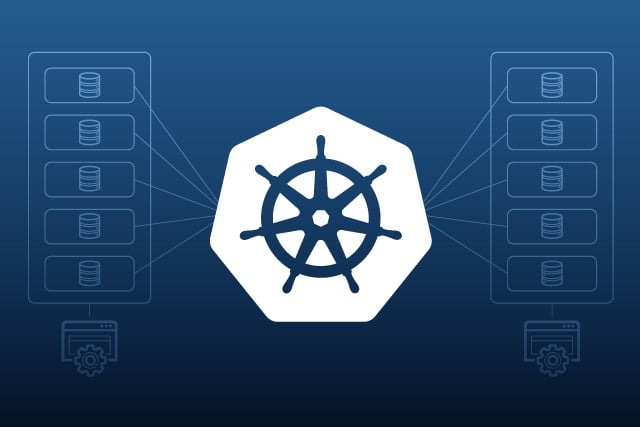
Kubernetes Cloud Tools
- Published on
- Authors

- Author
- Ram Simran G
- twitter @rgarimella0124
Managing cloud infrastructure today isn’t just a benefit – it’s a must. As more businesses move to the cloud, handling resources, applications, and costs becomes more complex. This guide breaks down some essential tools to help streamline your cloud operations, making them scalable, reliable, and cost-effective.
Karpenter: Smarter Kubernetes Autoscaling
Karpenter is a powerful autoscaling tool for Kubernetes, designed to be faster and more efficient:
- Quick Node Provisioning: Karpenter can add new nodes in seconds, reducing delays in scheduling pods.
- Better Resource Use: It smartly groups pods on nodes to make the most of available resources.
- Cloud-aware: Karpenter knows the best cloud instances and prices, helping save costs.
Tips for Use:
- Set clear rules for how you want nodes to be provisioned.
- Use spot instances for cost savings, but make sure you’re ready for any interruptions.
FluentBit: Lightweight Logging Tool
FluentBit is a go-to tool for handling logs because of its efficiency and flexibility:
- Low Resource Use: Written in C, FluentBit is light and fast.
- Multiple Protocols: It supports various ways to send and receive data (like HTTP, Kafka, and Elasticsearch).
- Customizable: You can add plugins to handle specific input, filters, or outputs.
Implementation Tips:
- Use FluentBit’s stream processing to clean up or modify logs on the fly.
- Add Kubernetes metadata to logs for easier tracking of pods and containers.
Prometheus: Monitoring Made Easy
Prometheus is a popular tool for monitoring cloud environments thanks to its key features:
- Scraping Model: It pulls metrics from targets, making configuration simpler.
- PromQL: A flexible query language for real-time analysis.
- Auto-discovery: Automatically detects new services, making it ideal for dynamic environments.
Pro Tips:
- Pre-compute frequently-used queries with recording rules.
- Set up alerts with the Alertmanager to stay on top of issues.
Grafana: Visualizing Data Simply
Grafana turns raw metrics into easy-to-understand insights:
- Supports Many Data Sources: Grafana can visualize data from Prometheus, Elasticsearch, and more.
- Dynamic Dashboards: Use templates to create flexible dashboards that adapt to changes.
- Alerting: Set up notifications directly from your dashboards.
Customization Tips:
- Take advantage of Grafana’s plugins for added functionality.
- Use dashboard templates and keep them version-controlled for easy updates.
Kubecost: Tracking Kubernetes Costs
Kubecost helps you understand where your money is going in Kubernetes:
- Detailed Cost Breakdown: See costs by pod, namespace, service, or even individual components.
- Usage Recommendations: It suggests better ways to allocate resources based on actual usage.
- Multi-cloud Support: Works across AWS, GCP, Azure, and even on-prem environments.
Cost-saving Tips:
- Use Kubecost reports to find and remove unused resources.
- Share cost details with your teams to encourage cost-saving practices.
Helm: Simplifying Kubernetes Deployments
Helm makes deploying and managing Kubernetes applications easier:
- Reusable Templates: Use Go templating to create charts that can be reused.
- Version Control: Easily manage different versions of your applications.
- Lifecycle Hooks: Automate processes during different stages of deployment.
Best Practices:
- Organize your charts for easy reuse.
- Use Helm’s dependency management for applications with multiple services.
Amazon EKS: Managed Kubernetes at Scale
Amazon EKS (Elastic Kubernetes Service) helps you run Kubernetes without the headaches:
- Managed Control Plane: AWS takes care of operating the Kubernetes master nodes.
- AWS Integration: EKS connects smoothly with other AWS services, like IAM and VPC.
- Fargate Support: Run pods without worrying about managing EC2 instances.
Optimization Tips:
- Use managed node groups to simplify worker node management.
- Consider EKS on AWS Outposts for hybrid cloud environments.
Additional Tools to Consider:
While the tools above are essential, here are a few more to consider for a stronger cloud setup:
- GitOps (ArgoCD, Flux): Automate and manage your infrastructure with Git-based workflows.
- Service Mesh (Istio, Linkerd): Add security, observability, and traffic control to your microservices.
- Policy Enforcement (OPA): Ensure your infrastructure follows security and operational policies.
- Secrets Management (Vault, AWS Secrets Manager): Securely store and manage sensitive information.
Future Cloud Trends to Watch
Cloud management is evolving fast. Here are some trends to keep an eye on:
- FinOps: Combining financial management and cloud operations to keep costs under control.
- AIOps: Using AI to automate issue detection and resolve infrastructure problems.
- Edge Computing: Managing data closer to where it’s generated and used.
- Sustainability: New tools are emerging to help reduce the environmental impact of cloud computing.
Mastering cloud infrastructure is all about using the right tools and staying on top of best practices. Whether it’s Karpenter for smart scaling, FluentBit for efficient logging, or Prometheus and Grafana for in-depth monitoring, these tools can make your cloud environment more efficient, cost-effective, and scalable.
Remember, cloud management isn’t just about using great tools. It’s about continuously improving, collaborating between teams, and focusing on delivering the best value to your users. Keep learning, keep improving, and your cloud setup will thrive.
Cheers,
Sim